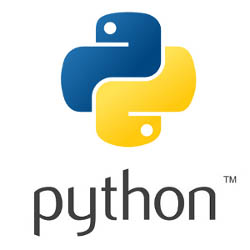
In this tutorial, we will show you how to install and configuration of Pip on a CentOS 7. For those of you who didn’t know, A pip command is a tool for installing and managing Python packages, such as those found in the Python Package Index. With the help of pip, you can also install the package of a particular version. Most importantly pip has a feature to manage full lists of packages and corresponding version numbers, possibly through a “requirements” file. It performs the same basic job as easy_install, but with some extra features.
This article assumes you have at least basic knowledge of Linux, know how to use the shell, and most importantly, you host your site on your own VPS. The installation is quite simple and assumes you are running in the root account, if not you may need to add ‘sudo‘ to the commands to get root privileges. I will show you the step-by-step installation of Pip Python on a CentOS 7 server.
Prerequisites
- A server running one of the following operating systems: CentOS 7.
- It’s recommended that you use a fresh OS install to prevent any potential issues.
- SSH access to the server (or just open Terminal if you’re on a desktop).
- A
non-root sudo useror access to theroot user. We recommend acting as anon-root sudo user, however, as you can harm your system if you’re not careful when acting as the root.
Install Pip on CentOS 7
Step 1. First, let’s start by ensuring your system is up-to-date.
yum clean all yum install epel-release yum -y update
Step 2. Installing Pip.
Method 1.
Install the pip by using the Yum command:
yum -y install python-pip
Once the installation is completed you can verify that it was successful by using the following command:
pip -V
Method 2.
Installing Pip with Curl and Python:
curl "https://bootstrap.pypa.io/get-pip.py" -o "get-pip.py"
Now install pip by using the following command:
python get-pip.py
Once the installation is completed you can verify the installation:
pip -V
Step 3. How to use the pip command.
After installing the python-pip package, the pip command will be available on the system. There are multiple options available with the pip command:
To install the new python package type:
pip install packageName
To uninstall the python package installed by pip type:
pip uninstall packageName
To search python package type:
pip search packageName
For more Pip options and usage examples you can use the –help flag:
[root@idroot.us ~]# pip --help Usage: pip <command></command> [options] Commands: install Install packages. uninstall Uninstall packages. freeze Output installed packages in requirements format. list List installed packages. show Show information about installed packages. search Search PyPI for packages. wheel Build wheels from your requirements. zip DEPRECATED. Zip individual packages. unzip DEPRECATED. Unzip individual packages. bundle DEPRECATED. Create pybundles. help Show help for commands. General Options: -h, --help Show help. -v, --verbose Give more output. Option is additive, and can be used up to 3 times. -V, --version Show version and exit. -q, --quiet Give less output. --log-file Path to a verbose non-appending log, that only logs failures. This log is active by default at /home/sharad/.pip/pip.log. --log Path to a verbose appending log. This log is inactive by default. --proxy Specify a proxy in the form [user:passwd@]proxy.server:port. --timeout Set the socket timeout (default 15 seconds). --exists-action Default action when a path already exists: (s)witch, (i)gnore, (w)ipe, (b)ackup. --cert Path to alternate CA bundle. [root@idroot.us ~]#
Congratulations! You have successfully installed Pip. Thanks for using this tutorial for installing Pip Python on CentOS 7 system. For additional help or useful information, we recommend you check the official Python website.